CRM Versus Customer Experience What’s the Real Difference
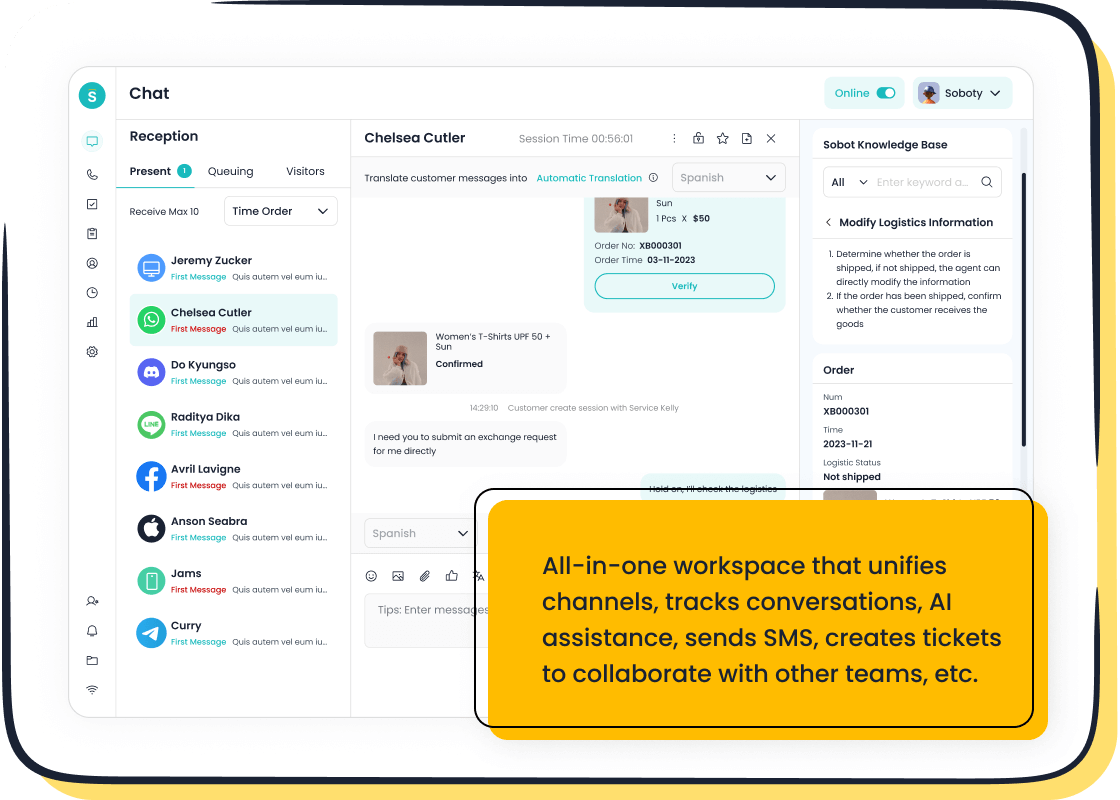
You may wonder about the real difference between crm and customer experience. CRM helps you manage customer data and build stronger relationships, which can boost lead conversion rates by 300% and increase sales revenue by 29%. Customer experience, however, covers the entire customer journey, shaping how customers feel about every interaction. Companies like Sobot use Sobot AI to unify crm and customer experience, helping you deliver seamless support and grow your business. A strong focus on both can raise customer satisfaction and loyalty.
CRM and Customer Experience
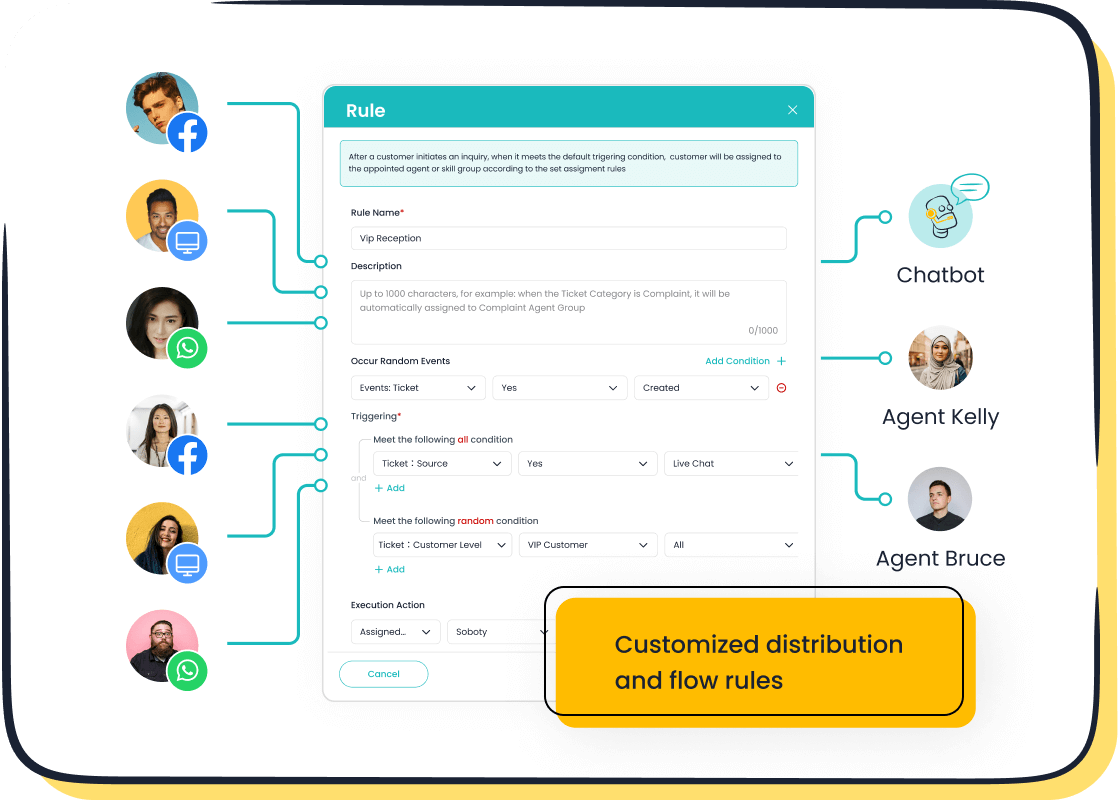
Customer Relationship Management
You use customer relationship management to organize, track, and improve every interaction with your customers. CRM systems help you collect customer data, store it in one place, and make it easy to access. This data includes purchase history, preferences, and support requests. When you use CRM, you can see a full picture of each customer relationship. This helps you offer better service and spot new sales opportunities. CRM also lets your teams work together, so sales, marketing, and support all have the same information. Studies show that CRM can increase sales by 29% and boost productivity by 34% (Salesforce). CRM and customer experience connect because CRM gives you the tools to personalize every step of the customer journey.
Customer Experience Management
Customer experience management, or CXM, is how you shape every touchpoint a customer has with your business. CXM covers everything from the first website visit to post-purchase support. You focus on making each moment positive and memorable. Good customer experience management means you listen to feedback, solve problems quickly, and make customers feel valued. Research shows that 73% of customers say customer experience is a key factor in their buying decisions. Companies that invest in CXM see higher retention and loyalty. Over 80% of businesses plan to increase their investment in customer experience (Forrester). CXM uses insights from CRM to create a seamless journey for your customers.
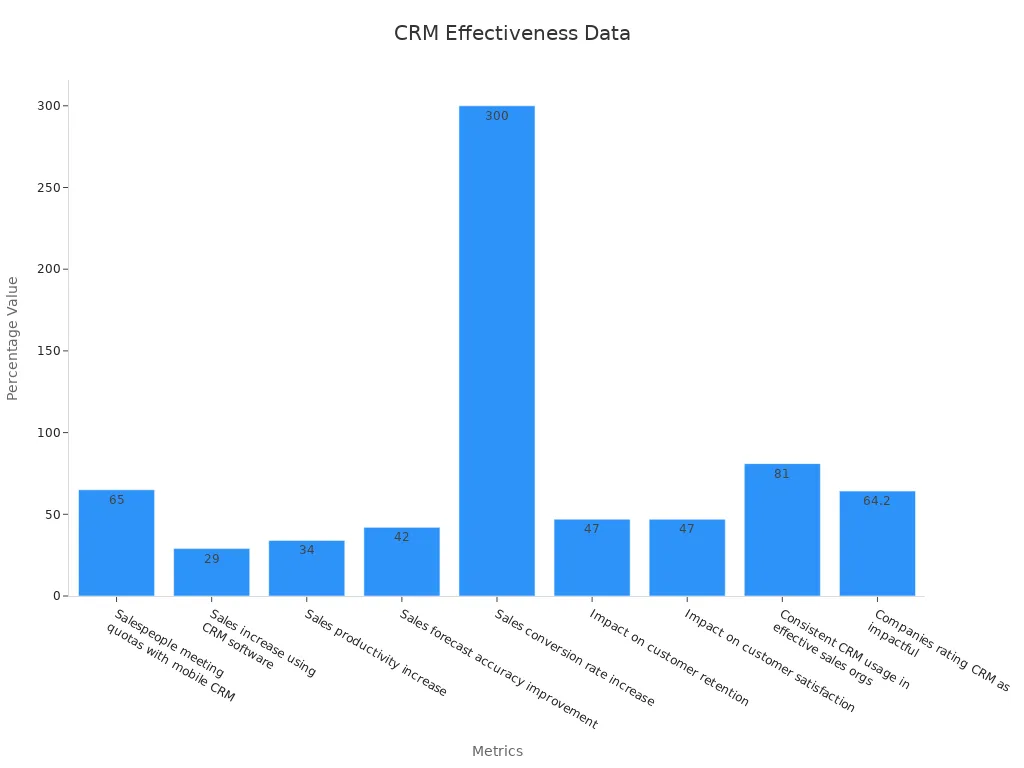
Sobot’s Role in Customer Contact
Sobot brings CRM and customer experience together in one platform. With Sobot Live Chat, you can manage customer relationships and deliver great customer experience at the same time. Sobot’s system collects customer data from every channel—web, app, social media—and puts it in a unified workspace. This helps your team respond faster and personalize every interaction. Sobot’s AI tools let you automate routine tasks, so agents can focus on building strong customer relationships. You can track customer satisfaction, measure CXM results, and see real-time analytics. Sobot’s omnichannel solution supports your CXM strategy by making sure customers get consistent service everywhere. When you use Sobot, you improve both CRM and customer experience, leading to higher loyalty and business growth.
Key Differences
Focus and Scope
You need to understand how CRM and customer experience management differ in what they cover. CRM focuses on managing customer data and building strong customer relationships. You use CRM to track sales, marketing, and support activities. CXM, or customer experience management, looks at the entire customer journey. You care about every touchpoint, from the first website visit to after-sales support.
Here is a table to help you see the differences:
| Aspect | Customer Experience Management (CXM) | Customer Relationship Management (CRM) |
|---|---|---|
| Primary Focus | Overall customer journey and satisfaction | Customer interactions and data |
| Objective | Improve experience at all touchpoints | Support sales, marketing, and service |
| Approach | Holistic and proactive | Transactional and reactive |
| Scope | All channels and touchpoints | Sales, marketing, and service touchpoints |
| Key Functions | Journey mapping, feedback, experience design | Lead management, sales automation |
You use CXM to make sure customers feel valued at every step. CRM helps you organize information and improve customer relationship management. Sobot brings both together, letting you manage data and deliver a great customer experience in one place.
Strategy and Technology
You use different strategies and tools for CRM and customer experience management. CRM relies on technology to collect and analyze customer data. You use CRM software to track sales, automate tasks, and manage contacts. Larger companies often use CRM for analytics and decision-making. CXM uses platforms that focus on the customer journey and feedback. You use CXM tools to map experiences and measure satisfaction.
Many organizations see CRM as a business strategy, not just a tool. You find that service companies use CRM analytics more than others. CXM, on the other hand, uses operational and collaborative approaches. You focus on teamwork and real-time customer support. Sobot’s omnichannel solution gives you both: analytics for CRM and real-time engagement for CXM. You can connect with customers on any channel and use AI to improve both strategies.
Tip: When you combine CRM and CXM technology, you get a complete view of your customers and can offer a personalized experience.
Metrics and Outcomes
You measure success differently in CRM and customer experience management. CRM tracks sales conversion rates, customer retention, and campaign ROI. You look at how many leads turn into customers and how long customers stay with your business. CXM focuses on customer satisfaction, Net Promoter Score (NPS), and feedback from every touchpoint.
For example, Sobot Live Chat lets you track over 150 indicators, including satisfaction surveys and response times. You can see how happy customers are and where you can improve. Companies that use both CRM and CXM see higher loyalty and better business results. Samsung, for instance, improved agent efficiency by 30% and reached a 97% satisfaction rate after using Sobot’s unified platform.
Note: Tracking both CRM and CXM metrics helps you understand your customers better and improve every part of the customer journey.
CRM and Customer Experience Management in Practice
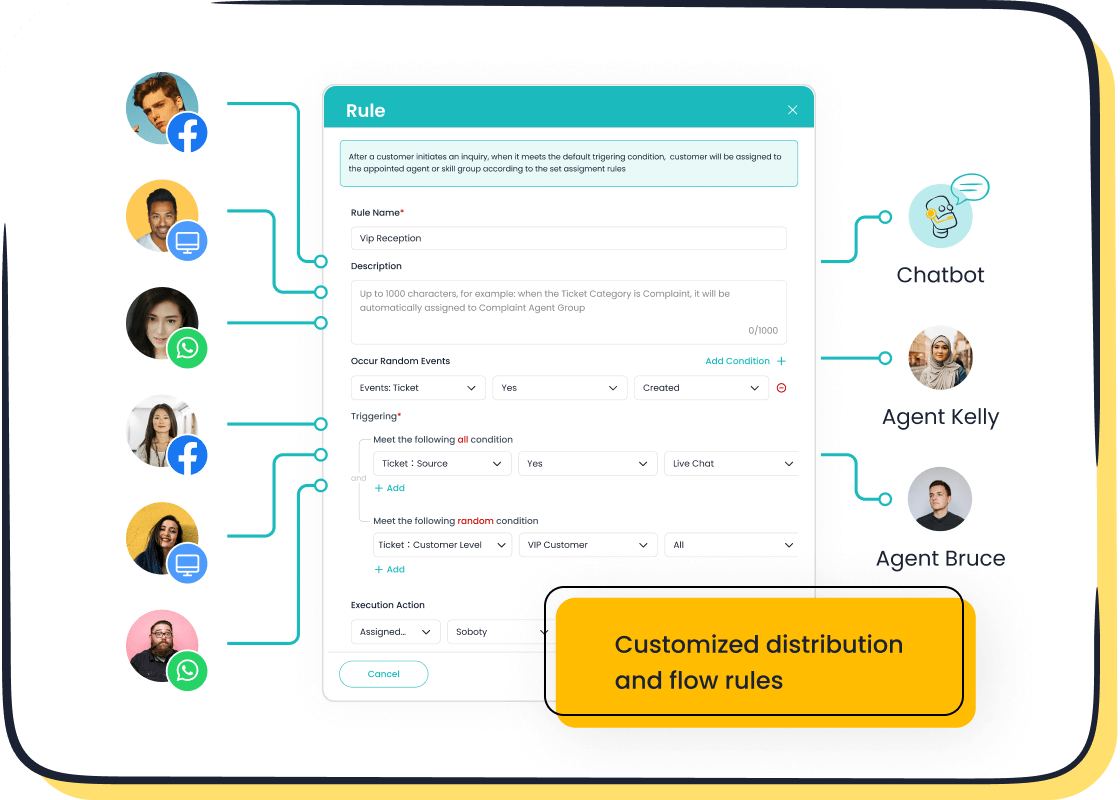
Sobot Live Chat for Customer Engagement
You can use Sobot Live Chat to connect with your customers on many channels. This tool helps you manage both CRM and cxm in one place. Sobot Live Chat supports websites, apps, and social media like WhatsApp, Facebook, Instagram, Telegram, and Discord. You reach your customers where they feel most comfortable. The platform uses AI to analyze data and create a personalized experience for each customer. You see faster response times and higher customer satisfaction. Companies like OPPO saw a 57% increase in repurchase rate after using Sobot Live Chat. The table below shows how Sobot Live Chat improves customer engagement and satisfaction:
| Metric / Example | Description |
|---|---|
| Multi-channel support | Connects with customers across websites, apps, and social media for timely interactions. |
| Conversion rate increase | AI tools and tailored marketing led to a 38% rise in conversion rates. |
| Repurchase rate improvement | OPPO achieved a 57% increase in repurchase rate. |
| Customer satisfaction & loyalty | Improved through quick responses and AI-driven personalized engagement. |
Tip: Using Sobot Live Chat helps you improve customer experience and build loyalty with every interaction.
Omnichannel Solutions
You can boost cxm by using Sobot’s omnichannel solution. This platform brings all your customer conversations into one workspace. You do not need to switch between tools. You see every message, call, or chat in one place. This makes it easy to give a consistent and personalized experience. Companies that use omnichannel CRM report a 22-25% increase in customer satisfaction and a 28-30% rise in retention rates. Revenue can grow by up to 26%. AI and automation help you respond faster and understand your customers better. Research shows that 80% of customers are more likely to buy when they get a personalized experience (Salesforce). Tracking key metrics like CSAT, NPS, and customer lifetime value helps you measure your success in improving customer experience.
- Customer Satisfaction (CSAT) Score
- Net Promoter Score (NPS)
- Customer Retention Rate
- Average Order Value (AOV)
- Customer Lifetime Value (CLV)
Customer Story: Samsung
Samsung wanted to improve customer experience and agent efficiency. The company used Sobot’s all-in-one contact center to manage thousands of customer inquiries every day. Sobot unified Samsung’s channels and connected all customer data. Agents could see every customer’s history and give fast, personalized service. Samsung also used chatbots to answer simple questions, so agents could focus on complex issues. After using Sobot, Samsung increased agent efficiency by 30% and reached a 97% customer satisfaction rate. Customers enjoyed a seamless journey and felt valued at every step. This story shows how you can use CRM and cxm tools together to improve customer experience and satisfaction.
Integration for Success

Aligning CRM and CX Goals
You can achieve better results by aligning crm and customer experience goals. When you bring these two together, you create a single source of truth for your teams. This helps everyone work with the same customer data and focus on the same objectives. Here are some benefits you gain from integrating cem and crm:
- Centralized customer data improves teamwork and consistency in every customer relationship.
- You can anticipate customer needs by analyzing past interactions, which helps in building trust and loyalty.
- Faster and more relevant communication happens when you use crm tools with templates and automations.
- Data privacy and compliance become easier to manage, which increases customer trust.
- Alignment reduces silos and makes customer experience a shared responsibility.
- Retention strategies become stronger, increasing customer retention and lifetime value.
- Companies that align crm and customer experience see higher sales productivity and revenue growth. Research shows most buyers will pay more for a great customer experience (Salesforce).
Best Practices with Sobot
You can follow proven best practices to get the most from integrating cem and crm. Sobot helps you do this with advanced tools and features. The table below shows how Sobot supports your customer relationship goals:
| Best Practice / Metric | Description / Impact |
|---|---|
| AI-powered chatbots | Handle 80% of customer inquiries, freeing agents for complex issues |
| Predictive analytics | Anticipate customer needs, improve response rates, and reduce wait times |
| Omnichannel messaging | Ensures seamless customer interactions across SMS, email, chat, and voice channels |
| Conversion rate improvement | 30% increase in conversions through AI-driven customer journeys |
| Customer response rate increase | 25% increase via omnichannel messaging |
| Retention rates | Companies with omnichannel strategies see 2.5 times higher retention |
| Integration with CRM and marketing automation | Unifies customer data for hyper-personalized experiences |
Sobot’s AI-powered chatbots and predictive analytics help you understand customers and personalize every customer relationship. You can see the impact in the chart below:
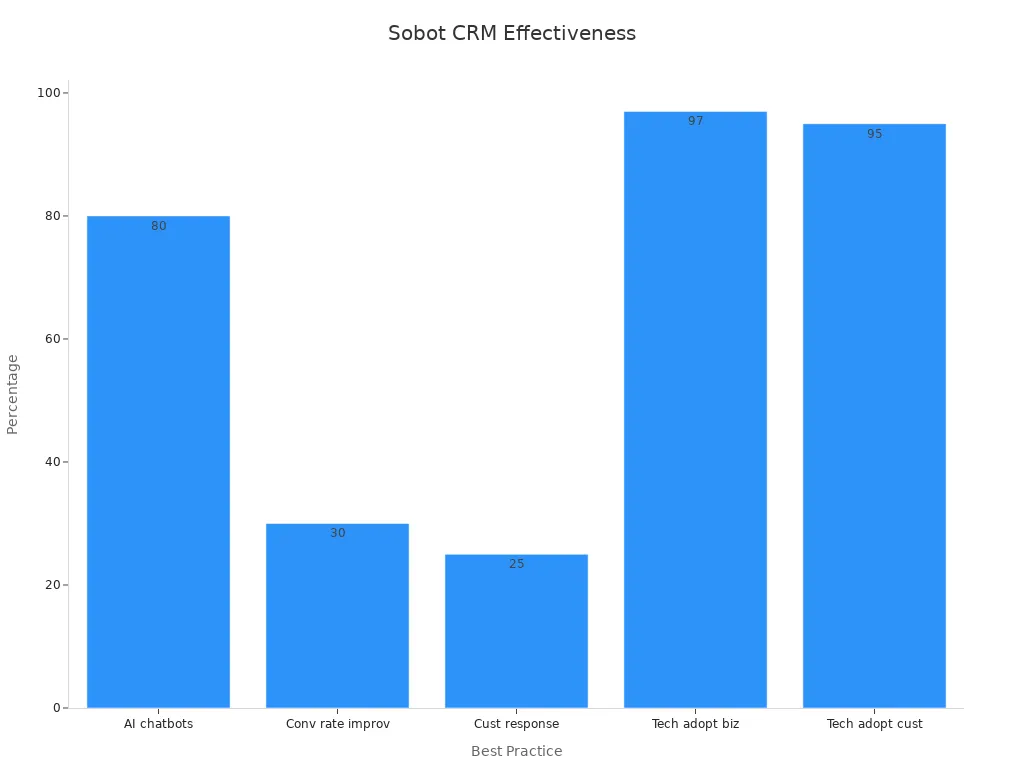
Tip: Using Sobot’s unified platform helps you increase customer loyalty and improve customer retention.
Overcoming Challenges
You may face challenges when integrating cem and crm. Common issues include unclear goals, user resistance, budget limits, and security concerns. You can overcome these by following simple strategies:
| Challenge | Issues Identified | Strategies to Overcome |
|---|---|---|
| Lack of Clear Objectives | Misalignment with business goals; Undefined success metrics | Set clear goals and KPIs; align with strategy; review progress regularly |
| User Resistance | Fear of change; perceived increased workload | Involve employees early; provide training; show crm benefits |
| Budget Constraints | Unforeseen expenses; lack of maintenance budget | Prepare a detailed budget; choose scalable solutions |
| Security and Compliance | Unauthorized data access; non-compliance | Use encryption and access controls; update security protocols |
| Performance Issues | Slow system; errors or downtime | Test systems; monitor and optimize performance |
A real-world example shows that clear objectives, good data tools, and employee training can boost sales by 25% in six months. When you use Sobot’s cloud-based solutions, you get flexibility and real-time access, making it easier to grow and adapt. This approach helps you build strong customer relationships and deliver a better experience for your customers.
Choosing the Right Approach
Assessing Business Needs
You need to start by understanding your business goals and the needs of your customers. Quantitative analysis helps you make smart decisions. You can use data to measure conversion rates, cost per acquisition, and return on investment. Tools like Mixpanel and Amplitude track how customers move through your onboarding process and where they drop off. Cohort analysis lets you see how different groups of customers behave over time. Predictive models can show you which customers might leave, so you can act early. Surveys and interviews add context by showing what motivates your customers and what challenges they face.
- Measure conversion rates and ROI to guide your budget.
- Track onboarding completion and drop-off points.
- Use cohort analysis to spot trends in retention and feature use.
- Apply predictive models to reduce churn.
- Combine data with customer feedback for a full picture.
Tip: Combining data and feedback helps you improve customer experience and meet your business goals.
When to Use CRM, CX, or Both
You should choose a customer relationship management (CRM) strategy when you want to organize customer data, automate processes, and improve retention. CRM works best if you need to segment customers, target profitable groups, and align your team’s work. Make sure you have a clear customer strategy before you start using CRM tools.
A customer experience (CX) strategy is the right choice when you want to stand out by giving customers a memorable and emotional experience. CX focuses on mapping the customer journey, improving every touchpoint, and building loyalty. If your goal is to create brand advocates and long-term relationships, CX will help you get there.
Many businesses find the best results by combining CRM and CX. This approach lets you manage data and deliver a seamless experience at every step. You can use CRM to organize information and CX to make every interaction special.
Next Steps with Sobot
You can take your customer experience to the next level with Sobot’s solutions. Here are some steps to get started:
- Invest in AI-powered tools like Sobot Live Chat to analyze customer data and provide real-time insights.
- Build a strong data infrastructure using cloud-based platforms to unify customer data from all channels.
- Train your team in data analysis and AI skills to keep up with new trends.
- Use Sobot’s omnichannel solution to predict customer needs and personalize every interaction.
- Foster a culture of innovation and continuous learning to stay ahead in customer engagement.
Sobot helps you handle up to 70% of customer interactions with AI, making your team more efficient and your customers happier. Companies using Sobot have seen customer satisfaction improve by up to 30% and retention rates rise by 91%. You can learn more about Sobot’s solutions at Sobot’s official website.
You now see that CRM helps you organize customer data, while customer experience shapes every touchpoint. When you combine both, you unlock powerful results:
- Existing customers spend 67% more than new ones, showing the value of strong relationships.
- 77% of people recommend brands after a positive experience.
- Sobot’s omnichannel solution can reduce response time by 80% and boost agent efficiency by 20%.
Explore how Sobot can help you improve customer satisfaction and drive growth.
FAQ
What is the main difference between CRM and customer experience?
CRM helps you manage customer data and track interactions. Customer experience covers every touchpoint, shaping how customers feel about your brand. You need both to build loyalty and grow your business.
How does Sobot support both CRM and customer experience?
Sobot unifies CRM and customer experience in one platform. You can use Sobot Live Chat to manage customer data, automate tasks, and deliver fast, personalized service. This helps you improve satisfaction and increase conversion rates.
Why should you care about integrating CRM and customer experience?
You gain a complete view of your customers. Companies that combine CRM and customer experience see up to 91% higher retention rates and 30% better satisfaction scores. Integration helps you deliver seamless support and boost revenue (Salesforce).
Can Sobot help you measure customer experience success?
Yes! Sobot tracks over 150 indicators, including customer satisfaction (CSAT), Net Promoter Score (NPS), and response times. You can use these metrics to improve your CRM strategy and enhance every customer experience.
What industries benefit most from CRM and customer experience tools?
You see benefits in retail, finance, gaming, education, and more. For example, Samsung used Sobot to unify CRM and customer experience, achieving a 97% satisfaction rate and 30% higher agent efficiency. Every industry can improve service with the right tools.
See Also
Best Customer Feedback Platforms Reviewed And Compared
How AI-Powered Agents Are Transforming Customer Support
Comparing Genesis And Genesys Call Center Solutions
